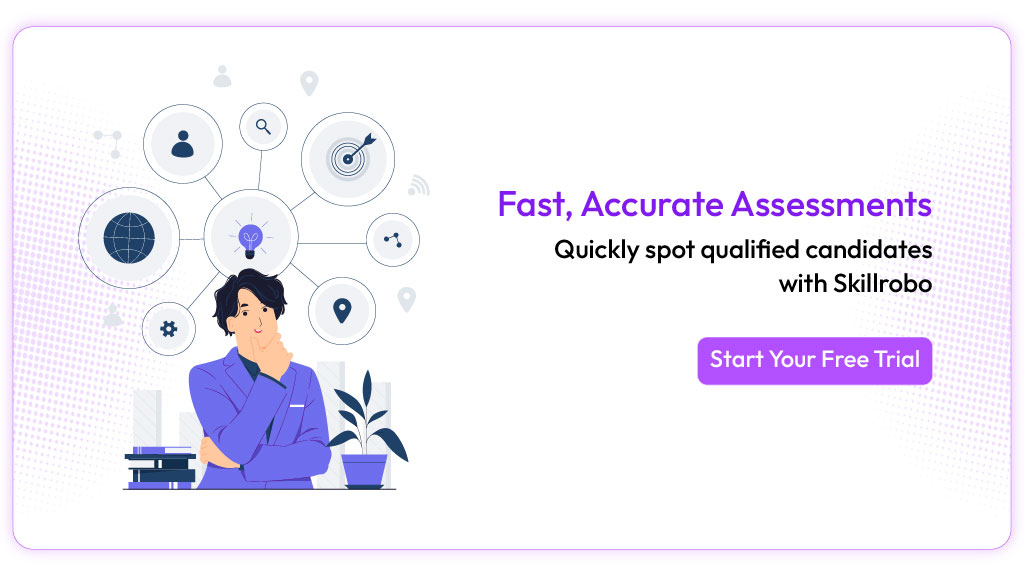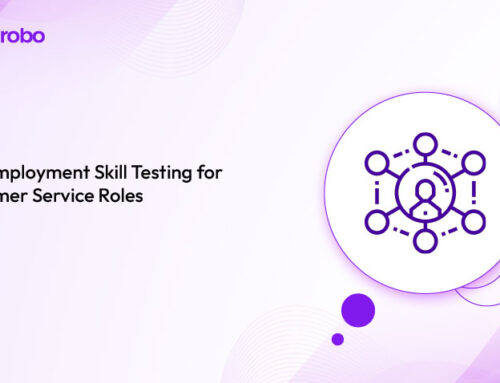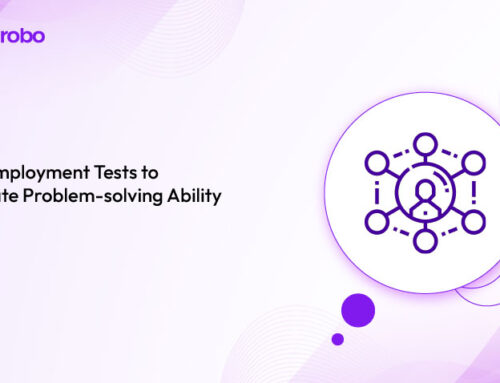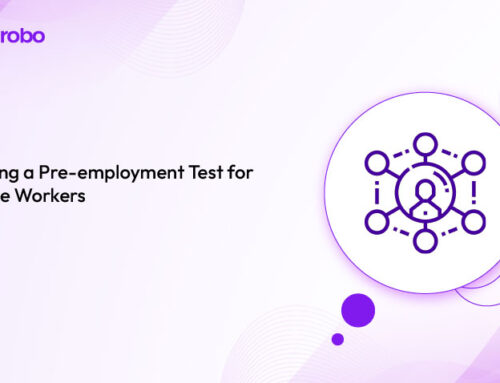
An effective recruitment and selection process is more than a checklist—it’s the framework for building great teams. In a competitive hiring landscape, organizations need structured, tech-enabled workflows that reduce time-to-hire, improve hiring accuracy, and deliver high-quality candidates.
According to SHRM, companies with a formal hiring process are three times more likely to improve year-over-year hiring performance. This blog breaks down the 7 essential stages of the recruitment and selection lifecycle and explains how tools like SkillRobo help HR teams optimize each one.
7 Stages of the Recruitment and Selection Process
Stage 1: Job Analysis and Role Definition
Job analysis involves identifying the responsibilities, outcomes, and qualifications for a role. This includes understanding the skills required, behavioral expectations, and how the position contributes to business goals.
Without clarity in this stage, you risk misaligned candidates and unnecessary turnover. Defining the role accurately sets the tone for the entire recruitment process.
Tools like Mercer Mettl or TalentGuard help benchmark roles, while SkillRobo’s test builder allows you to map assessments to critical cognitive and behavioral traits.
To evaluate this stage, measure the time it takes to finalize job descriptions and gather feedback from hiring managers after the hire.
Tips:
Involve current employees in similar roles and focus on hard and soft skills, especially decision-making, adaptability, and communication.
Stage 2: Job Posting and Candidate Outreach
Once the role is clearly defined, the next step is to promote it strategically across job boards, social platforms, and internal career pages.
Effective outreach uses data to target the right candidates with the right message. Vague or outdated job posts will attract irrelevant applicants, slowing down the funnel.
Use automated job distribution platforms like Workable or SmartRecruiters. AI-driven ad tools and mobile-optimized career pages can dramatically boost visibility and conversions.
Track your application conversion rate, source-of-hire effectiveness, and cost-per-applicant to evaluate the success of your outreach efforts.
Tips:
Use inclusive, clear job titles. Promote your employer brand and mission to connect emotionally with job seekers.
Stage 3: Resume Screening and Initial Filtering
Manual resume screening is one of the biggest bottlenecks in recruitment. It consumes time, introduces bias, and often misses top candidates with unconventional backgrounds.
Modern recruiters are shifting to capability-based screening. With SkillRobo, assessments are triggered automatically when a candidate applies—allowing filtering based on actual skill performance rather than guesswork.
In addition to resume parsing and keyword matching, SkillRobo’s automated test invites remove the need for subjective resume reviews early in the process.
Track metrics like average screening time, screening-to-interview ratio, and shortlisting accuracy to monitor efficiency.
Tips:
Focus on skill-based data rather than relying solely on resumes. Let early-stage testing highlight hidden talent.
Stage 4: Pre-Employment Assessments
This phase provides a structured, unbiased view of a candidate’s skills, behavior, and job-readiness before the interview begins.
SkillRobo enables companies to administer tailored assessments based on role requirements. You can measure problem-solving, memory, personality traits, and even stress response—all within one dashboard.
These assessments improve hiring decisions by providing insights that aren’t visible in resumes or interviews.
Track test completion rates, average scores by role, and time between test invite and result to optimize this stage.
Tips:
Keep assessments under 30 minutes. Design test content based on real job scenarios for better accuracy. Avoid generic quizzes and focus on role-specific challenges.
Stage 5: Interviews and Evaluation
After testing, the top candidates are shortlisted for interviews. But unstructured interviews can lead to inconsistency, bias, and poor hires.
With SkillRobo, hiring teams get access to detailed candidate reports—covering assessment scores, behavioral insights, and comparative rankings—so interviews are more focused and productive.
Using structured interview guides and scorecards ensures every candidate is evaluated on the same criteria.
Track interview-to-offer ratios, interviewer feedback consistency, and candidate satisfaction surveys to evaluate success.
Tips:
Use behavioral and situational questions based on test results. Document feedback in scorecards and review interview quality regularly.
Stage 6: Selection and Job Offer
This stage includes final candidate evaluation and extending an offer. It’s crucial to move quickly—delayed decisions can cause top talent to accept offers elsewhere.
SkillRobo offers final ranking data and integrated shortlisting tools to help make fast, data-backed decisions. Combine these insights with interview notes for a comprehensive candidate profile.
Use digital offer letters and e-signature tools to speed up documentation. ATS integration ensures no information gets lost between systems.
Track time-to-offer, acceptance rate, and offer withdrawal reasons to fine-tune your process.
Tips:
Be clear and prompt with communication. Personalize offers and set a deadline for response. Transparency wins trust.
Stage 7: Onboarding
Onboarding begins the moment a candidate accepts the offer. It includes everything from paperwork and access setup to orientation and training.
A seamless onboarding process improves retention, engagement, and first-90-day performance. A weak start often leads to early resignation.
Use onboarding tools like BambooHR or Rippling to automate checklists, assign tasks, and monitor completion. Preboarding via SkillRobo’s integrations helps prepare candidates before their first day.
Measure onboarding completion time, early productivity, and new hire Net Promoter Scores (NPS) to evaluate onboarding effectiveness.
Tips:
Send welcome emails ahead of Day 1. Assign mentors to guide new hires. Track every step in the onboarding journey.
How SkillRobo Enhances the Recruitment Lifecycle
Hiring success depends on speed, structure, and smart decision-making. SkillRobo fits into the recruitment and selection process by automating the most time-consuming phases—screening, testing, shortlisting, and ranking—without sacrificing quality or fairness.
Here’s how SkillRobo supports each stage:
- Assessment-Driven Screening: Automates the filtering of applicants by immediately assigning pre-employment tests, reducing reliance on resumes and manual review.
- Role-Specific Test Builder: Enables recruiters to create or choose from prebuilt test templates based on real job requirements and required competencies.
- Real-Time Scoring and Ranking: AI-based evaluation provides unbiased, real-time rankings to help decision-makers prioritize candidates.
- Integrated Reporting Dashboards: Offers test analytics, pass/fail ratios, and candidate benchmarks to monitor recruitment health.
- Remote-Proctored Testing: Ensures integrity and security in remote hiring environments, especially for global or hybrid teams.
SkillRobo simplifies complex hiring tasks and transforms them into automated workflows that reduce time-to-hire by up to 60%.
Why HR Teams Choose SkillRobo Over Generic Testing Tools
Unlike generic skill assessment platforms, SkillRobo is built with flexibility and real-world hiring in mind. It enables teams to go beyond checking boxes and start measuring true role fit.
Here’s why it stands out:
- No-Code Test Creation: Anyone in HR or recruitment can build customized tests without technical skills.
- Cognitive + Behavioral Insights: Understand how a candidate thinks, solves problems, and responds to pressure, not just what they know.
- Faster Turnaround: Candidates can be evaluated and ranked in hours instead of days.
- Scalable for Any Team Size: Whether you’re hiring 3 or 300, SkillRobo adapts to your workflow.
- Affordable and ATS-Friendly: Integrates seamlessly with applicant tracking systems and supports pay-as-you-grow models.
Recruiters save time. Hiring managers gain confidence. Candidates enjoy clarity.
Conclusion: Ready to Build a Smarter Hiring Process?
The recruitment and selection process is no longer just about filling roles—it’s about making efficient, data-driven hiring decisions that grow your business.
With SkillRobo, companies move from reactive, manual hiring to automated, structured recruitment that delivers better hires faster. From job role assessments to final ranking, SkillRobo empowers HR teams to reduce time-to-hire, eliminate bias, and focus on fit.
Want to streamline your hiring pipeline?
Sign up for SkillRobo and discover how to modernize your recruitment process.
FAQs
- What are the most important stages in the recruitment and selection process?
All seven stages—job analysis, job posting, resume screening, assessments, interviews, selection, and onboarding—are important and interconnected. However, modern hiring strategies emphasize pre-employment assessments and structured interviews as crucial for improving quality-of-hire and reducing time-to-hire. - How does automation improve the recruitment process?
Automation removes manual bottlenecks, ensures consistency, and eliminates bias. Platforms like SkillRobo automate resume screening, send assessments instantly, score candidates in real-time, and streamline shortlisting, resulting in up to 60% faster hiring and better decision-making. - Where do pre-employment assessments fit into the recruitment process?
Pre-employment assessments typically come after initial screening and before interviews. They help validate a candidate’s skills, behavior, and cognitive abilities, ensuring that only high-fit candidates move forward. Tools like SkillRobo integrate these tests seamlessly into the hiring funnel. - What metrics should recruiters track to improve hiring performance?
Key metrics include time-to-hire, screening-to-interview ratio, offer acceptance rate, and onboarding completion time. Monitoring these across all seven stages helps identify inefficiencies and optimize the hiring process continuously. - Why choose SkillRobo over traditional recruitment methods?
Traditional methods rely heavily on resumes and intuition. SkillRobo adds structure, objectivity, and speed by combining customized role-based assessments, real-time scoring, and data-backed shortlisting. It reduces hiring delays, improves candidate experience, and enhances selection accuracy.









